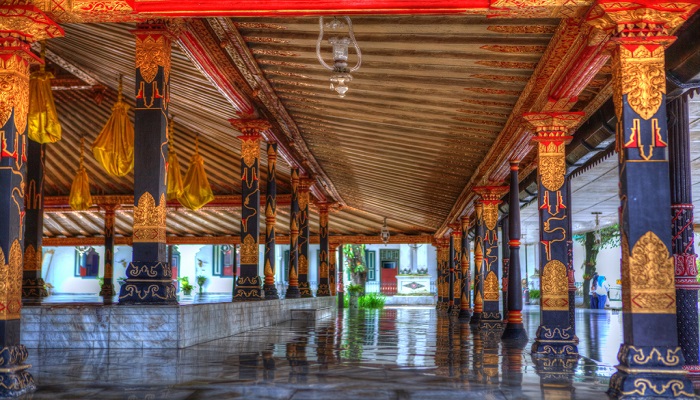Yogyakarta Palace is the last job of all kingdoms that have triumphed in Java. Keraton Jogya was founded by Sultan Hamengku Buwono I and until now there has been an amazing culture. Located in the middle of the city of Yogya where when taking a straight line, the Yogyakarta Palace is located between Mount Merapi and the South Sea.

In 1755, there was a Giyanti agreement, where the kingdom was divided into 2 namely the eastern region (now the Surakarta Palace) and the western region (Yogyakarta Palace). Yogyakarta Palace is very thick with Javanese ethnic cultural heritage.
Lor Square
Alun Alun Lor is the entrance that we will meet after passing the big gate of the Palace. The initial function of the Alun Alun Lor is the place to hand over the schedule of the royal soldiers. At present, Alun Alun Lor is only used as an ordinary garden.
Gede Kauman Mosque
The Gede Kauman Mosque is the Mosque of the Sultanate of Yogyakarta or also called the Gedhe Kauman Mosque, located west of Alun Alun Lor. This mosque was built in 1733 by Sultan Hamengku Buwono I who was rich in Javanese elements. The Gede Kauman Mosque is where Sultan Hamengku Buwono performs all worship rituals. At present, the mosque is still functioned for traditional ceremonies such as the Grebeg and Sekatenan Ceremonies.
The Gregeban ceremony is a prayer for the Gunungan (produce) that is waiting for it to be distributed to the community. One part of the mosque was used to store the place of the gamelan when the Saketanan ceremony was held.
Siti Hinggil Lor
Siti Hinggil Lor is part of the Palace used for the important uparaca of the Keraton Yogya family such as a grand wedding and a throne ceremony.
5 parts of Siti Hinggit Lor:
- Manguntur Tangkil Ward for the Sultan’s seat when there was an official ceremony
- Witono Ward, the place to place the Keraton heritage
- Tarub Agung Ward, where nobles transit when the group they bring enters the palace
- Pacikeren Ward, home of the courtiers of Mertolulut, who acted as executioners of the royal punishment
- Kori Ward, home of the Kori courtiers
Kedhaton
Kedhaton is the residence of the Sultan and the Keraton family. The Sultan occupies the Keraton Kilen while the Gedong Jene section is the place of the Sultan’s office. The Keputren section is for the daughters of the Sultan, the wives, and concubines of the King. The Kesatriyan section is the place for the sons of the King.
Kecono Ward is a place to store valuables of the Kingdom, which on the 1st of Muharram will be moved to the Manis Ward to be cleaned.
Sri Manganti
Sri Manganti is a place used to receive Sultan’s great guests. At present, Sri Manganti is used for gamelan rooms and tourist exhibition rooms.
South Square
In his time, Alun Alun Kidul functioned as an archery training ground by sitting cross-legged and seeing horse riding dexterity. In the middle of the Alun Alun Kidul is often used for Masangin ceremonies. Rituals where people have to walk straight past 2 banyan trees with closed mates and if successful, they are believed to be fulfilled.